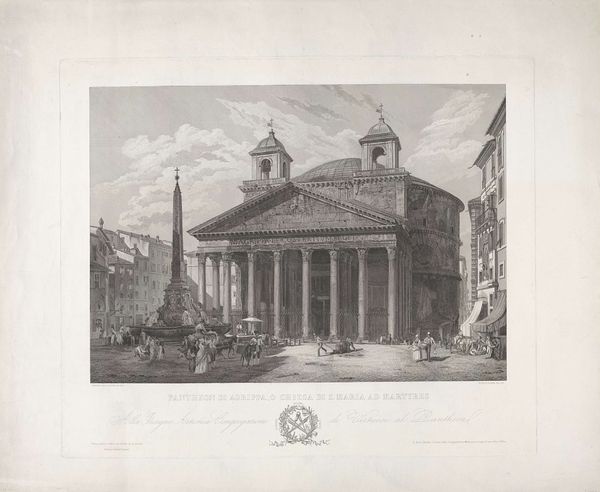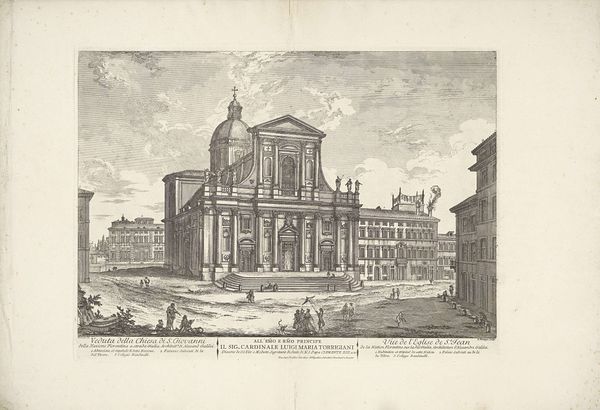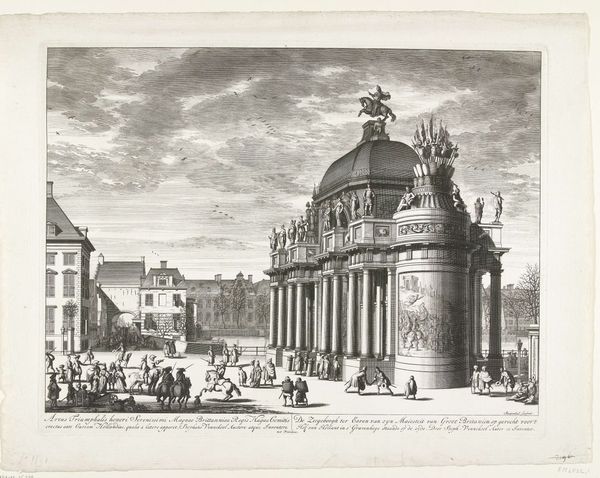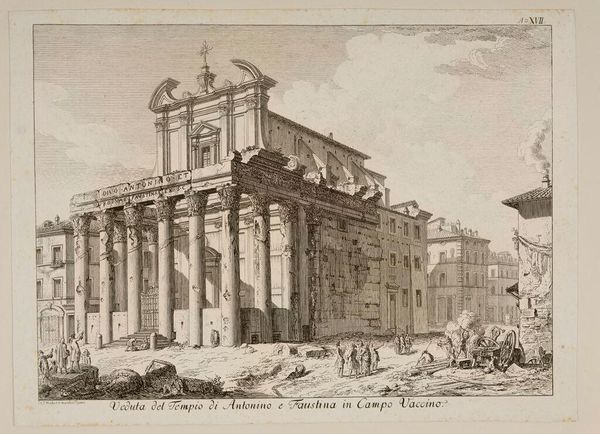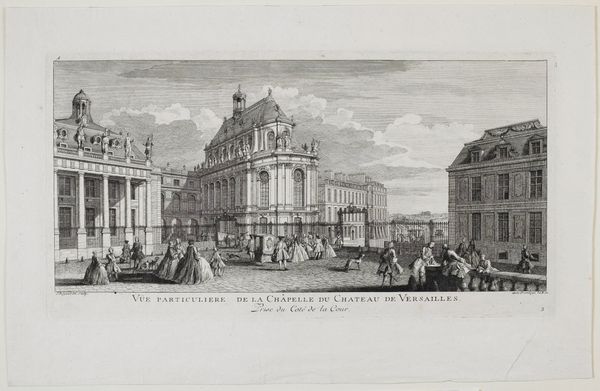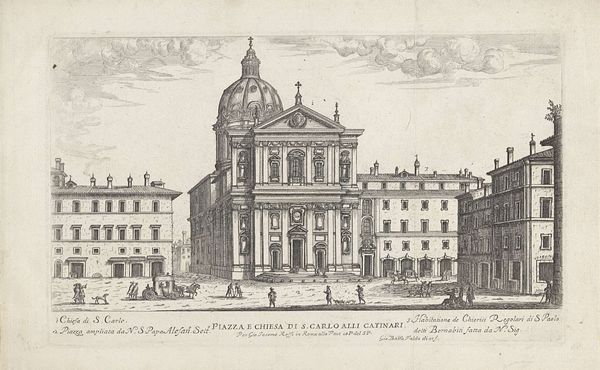
print, engraving, architecture
#
neoclacissism
# print
#
old engraving style
#
landscape
#
cityscape
#
history-painting
#
italian-renaissance
#
engraving
#
architecture
Dimensions: height 367 mm, width 480 mm
Copyright: Rijks Museum: Open Domain
Curator: It’s like stepping back in time, isn’t it? This print, entitled "Pantheon," by Francesco Barbazza, probably dates from around 1775-1785. Editor: I can almost hear the clip-clop of horse hooves on the cobblestones. It's… restrained, elegant, but slightly sterile, no? Very ordered and precise. It's not singing to me, more like whispering rules. Curator: Perhaps that’s the Neoclassical influence speaking through the rigorous lines and measured composition. Look how Barbazza meticulously renders every column, every stone. The architectural detail is incredible. Note how he uses light and shadow to define the form. Editor: True, there's definitely something monumental in its stark geometry. That perfect symmetry almost feels a bit too perfect, like it's suppressing a wilder energy. It’s more of a scientific illustration to me. Are those supposed to be people loitering down there? They don't convey anything particularly human. Curator: They are simply filling the space and providing the appropriate sense of scale to the majestic temple. In reality, they have as much soul as grains of sand here. To its credit, the work is more than a simple record. Consider that Francesco has carefully integrated a sense of everyday life with the timelessness of the Pantheon. Editor: I’ll grant you that! Juxtaposing that solid, ancient structure with the suggestion of daily life does add a layer. Is there some attempt at a narrative element, despite its formality? Curator: I'd like to think so! Although the emphasis appears to me to be on history and on providing context for viewers of that day. The artist provides us with this lasting image by fusing the ancient world with its current setting. The Renaissance lives on through it! Editor: The attempt at rendering a living world seems almost awkward given the engraving's strict nature and adherence to geometrical, rational values. So, maybe I wasn't wrong in saying it feels somewhat cold to me. Thank you; I have enjoyed reflecting with you. Curator: Thank you. I now realize that the appeal may be for a learned mind rather than for people’s souls! It seems we have both found new appreciation in our points of view!
Comments
No comments
Be the first to comment and join the conversation on the ultimate creative platform.



